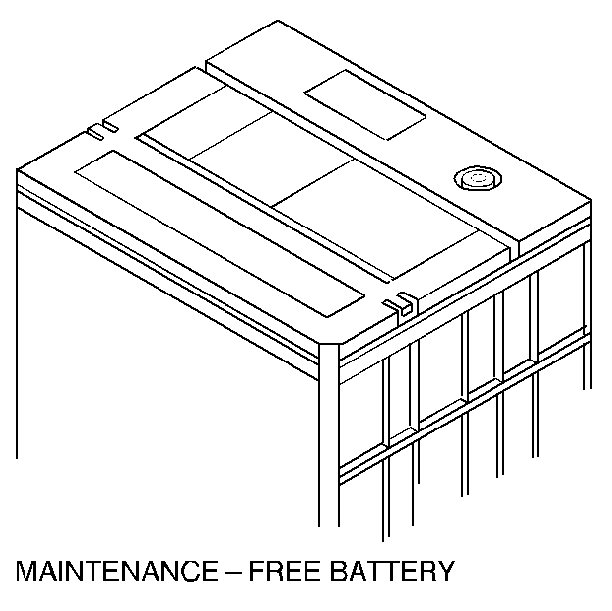Caution: Batteries generate hydrogen gas, which is extremely flammable and may
explode violently if ignited by a spark or a flame. Battery acid is extremely
corrosive and causes severe personal injury if the acid comes into contact
with the skin, and blindness if the acid comes into contact with the eyes.
In order to avoid severe personal injury, use extreme caution
when servicing the battery or battery-related components.

- A maintenance free battery is standard on all vehicles. There are no
vent plugs in the cover. The battery is completely sealed except for two small
vent holes in the side. These vent holes allow the small amount of gas that
is produced in the battery to escape.
- The battery has three functions in the electrical system:
| • | Provides a source of energy for engine cranking |
| • | Voltage stabilizer for the electrical system |
| • | provides energy for a limited time when the electrical load exceeds
the output of the generator |
- The battery specification label contains important information
about the following:
| • | The original model number |
| • | The recommended replacement model number |
| • | The cold cranking Amps (CCA) |
Battery Diagnosis
If the battery tests good but still fails to perform well, the following
are some of the more common causes:
| • | A vehicle accessory was left on overnight. |
| • | The driving speeds have been slow with frequent stops (stop-and-go
driving). |
| • | The electrical load has exceeded the generator output (particularly
with the addition of aftermarket equipment). |
| • | Existing conditions in the charging system, including the following
possibilities: |
| - | A bad generator voltage regulator |
| • | The battery has not been properly maintained, including the following
situations: |
| - | A failure to keep the terminals tight |
| - | A failure to keep the terminals clean |
| - | A loose battery hold-down |
| • | Existing mechanical conditions in the electrical system, such
as any short or pinched wires, attributing to power failure. |
| • | The car is in storage for extended periods of time. |
| • | Engine mechanical problems, causing extended cranking periods. |
| • | The hydrometer has been read incorrectly. |
| • | There has been an insufficient Ampere-hour charge rate for a discharged
battery. |
| • | There is a burned out charge indicator bulb causing a NO CHARGE
condition. |
| • | There is a continuous current draw on the battery through excessive
parasitic drain. |

